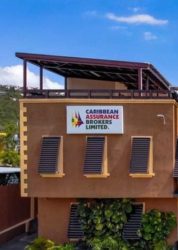Kingston Properties is reporting lower profits in the March quarter this year compared to last year. Not only are profits lower, there was a significant hit from financing costs, caused by foreign exchange losses on loans denominated in US dollars due to slippage of the Jamaican dollar during the quarter. The company reported a loss of $10.8 million before foreign exchange loss and after a tax credit, the loss was down to $7.2 million. In the similar quarter last year the company reported a profit of $3.2 million before tax and $2.45 million after tax. Other Comprehensive amounting to $22.5 million resulting from translation gain on the operations resulted in a positive picture at the end of the day ,with Comprehensive Income being $15.44 million. In 2012, the company reported Comprehensive Income of $6.2 million.
Income | Rental revenue for the quarter was $21.86 million, a 14 percent move from $19.1 million in 2012 but operating expenses climbed by 44 percent, much faster than income to $14.8 million. Management states that indirect property expenses accounted for approximately $2.9 million of the $4.5 million increase in overall operating expenses, with the major contributors being repairs and maintenance, home owners’ association fees and property taxes.
Group finance costs were $19.6 million for the quarter compared with $7.4 Million for the similar period in 2012.These amounts include unrealized losses of $14.3 million and $2.5 million respectively, due to foreign currency translation losses resulting from the devaluation of the Jamaican dollar.
 At the end of the quarter, Investment Properties were $850 million, an increase of $641.4 million over the 2012 first quarter. Fair value gains of $166.3 million on the Red Hills Road property and positive currency impact of $30.3 million on the Miami residential condominiums, accounted for the increase in property values.
At the end of the quarter, Investment Properties were $850 million, an increase of $641.4 million over the 2012 first quarter. Fair value gains of $166.3 million on the Red Hills Road property and positive currency impact of $30.3 million on the Miami residential condominiums, accounted for the increase in property values.
Cash and equivalent amounted to $200 million of which $168.1 million is restricted amounts.
Assets & Loans Concerns | Group liabilities were $350.3 million at the end of March, including current and long term loans payable of $325 million of which $186 million in payable within twelve months. Although the company has enough cash to meet this year’s pay out, the real concern is that the amounts to be paid over the life of all the loans is, in the short run, not being supported by cash flow. The quarterly report did not address this issue.
Funding options | In its annual report to shareholders, the company stated that they have a number of options to raise funds, these include:
- Convertible bond, with incentives for holders to convert to equity
- Secured bond with first claim on the property
- Equity capital; preferred, common
- Other types of instruments based on investor preferences and objectives
Property holdings | Kingston Properties holds a portfolio of 89,957 square feet of property consisting of a fully tenanted office/warehouse building of approximately 26,000 square feet located on Hagley Park Road in Kingston, Jamaica and 19 condominium apartments in downtown Miami.
The company discloses that it has been evaluating doing transactions in the affordable segment of the local residential market with the goal of providing a housing solution for the large group of buyers with steady income who are looking for units priced below $7 million. Finished homes will be in the range of 800 square feet at a minimum, allowing most home buyers a comfortable unit size without the immediate desire for expansion.






